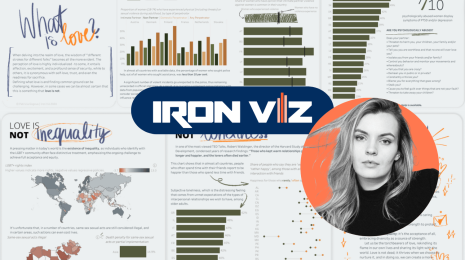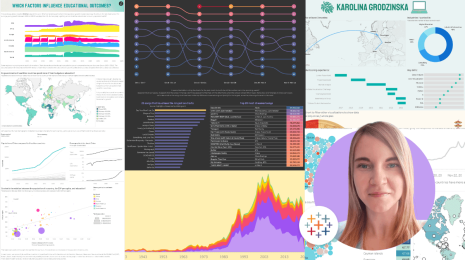Now in beta: Save time with web authoring on Tableau Public
When you want to explore, create, and share data visualizations, we're happy to share that you can start creating vizzes directly from a browser on Tableau Public with the web authoring beta. We believe that focus should be on data exploration, analysis, and storytelling, and not on installations and updates. Try the new feature by signing in and navigating to your profile page. If you don’t have a Tableau Public profile, create one for free.

More vizzing in less time
In recent years, Tableau Public has added more browser-based features—with the ability to edit vizzes on your Tableau Public profile straight from a browser, explore visualizations made by others, and make variations directly from a browser.
With this release, start creating vizzes and use the latest features without installing or updating Tableau Desktop to connect to data and save to your profile. The entire process is more streamlined, saving time and the hassle of switching between Tableau Desktop and your browser.
Start your vizzes from a browser
Sign in to Tableau Public and navigate to your profile page by clicking on My Profile in the top navigation bar. The new “Create a Viz” button is where you’ll get started and be prompted to connect to the data, either by selecting a file to upload or just dragging and dropping them onto the dialog. If you don’t have a dataset, follow along by downloading this spreadsheet of Netflix TV shows and movies available as of 2019 (Source: Kaggle) or find sample data on the Tableau Public Resources page.

Once your file is selected, go ahead and create the data source, drag and drop tables into canvas, and combine data with joins, unions, and relationships—even across multiple files! Next, click Create Extract. Like in Tableau Desktop, with web authoring you can connect to data in a variety of formats. In this release, web authoring supports Excel, text-based data sources (.csv, .tsv), and spatial file formats that only require one file (.kml, .geojson, .topojson, .json, Esri shapefiles and Esri File Geodatabases packaged in a .zip). Coming soon, you can connect to data using Google Drive, OData, Web Data Connector, and more.

Now, make some charts. Click Sheet 1 and drag and drop fields from the data pane onto Rows and Columns, or get help from Show Me as you visualize the data. Charts and dashboards can be customized with tooltips, labels, parameters, sets, actions, and more formatting options.
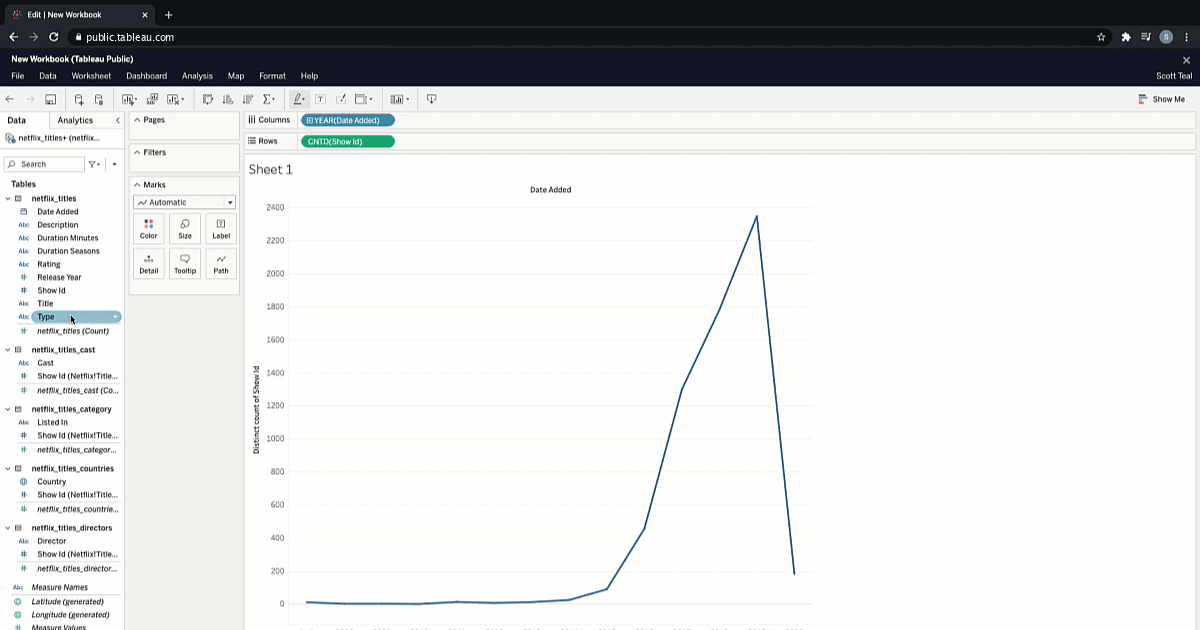
When your viz is finished and ready to save to Tableau Public, click File > Save, give it a name, and click Save. Exit out of the web authoring window and you will see the viz saved to your profile for many others to see, interact with, and learn from! If it needs adjustments, click Edit to jump into web authoring again.
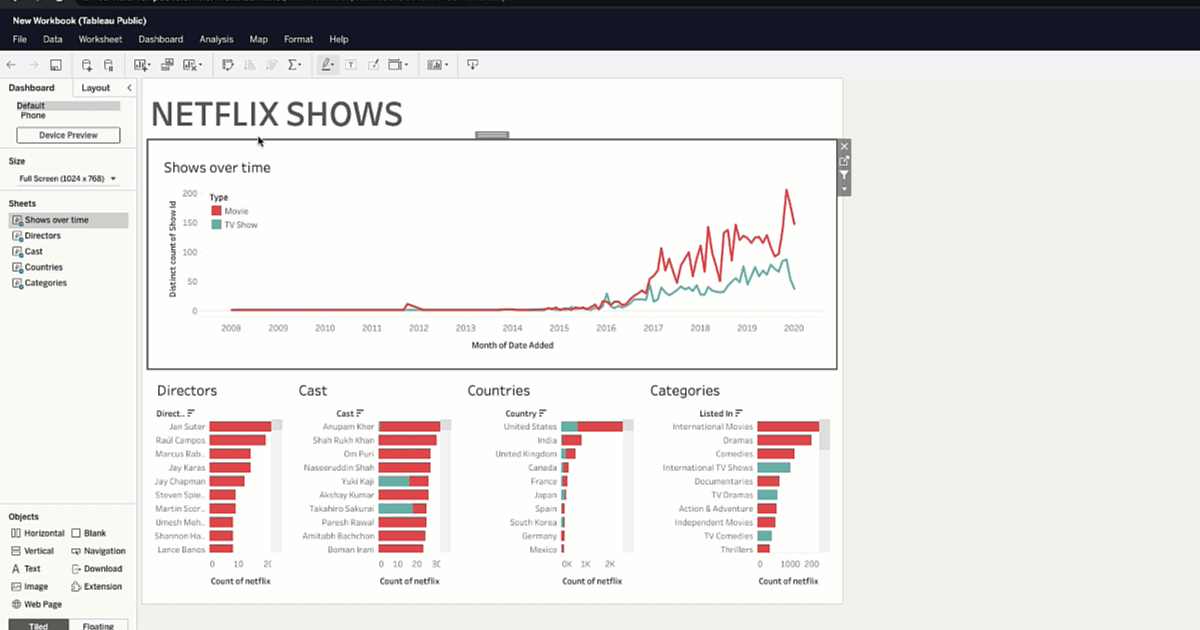
Options don’t end there. We made a few recent updates to Tableau Public:
- Search Improvements: Explore the millions of vizzes and author profiles on Tableau Public more easily with improvements to the search algorithm. Quickly scan through the results with an improved grid layout. Try it out by searching for popular terms like “March Madness” or “Netflix”
- Web Authoring improvements: Format filters, parameters, legends, and device layouts also make it easier to create from your browser.
- More Dashboard Extensions: You can now use Parameter Actions, Date Updater, Data-Driven Parameters, Semiotic Hierarchy, and many more extensions to customize your vizzes–all from your browser! (View all dashboard extensions supported on Tableau Public in the Extension Gallery)
Learn more about the new features in 2021.1.
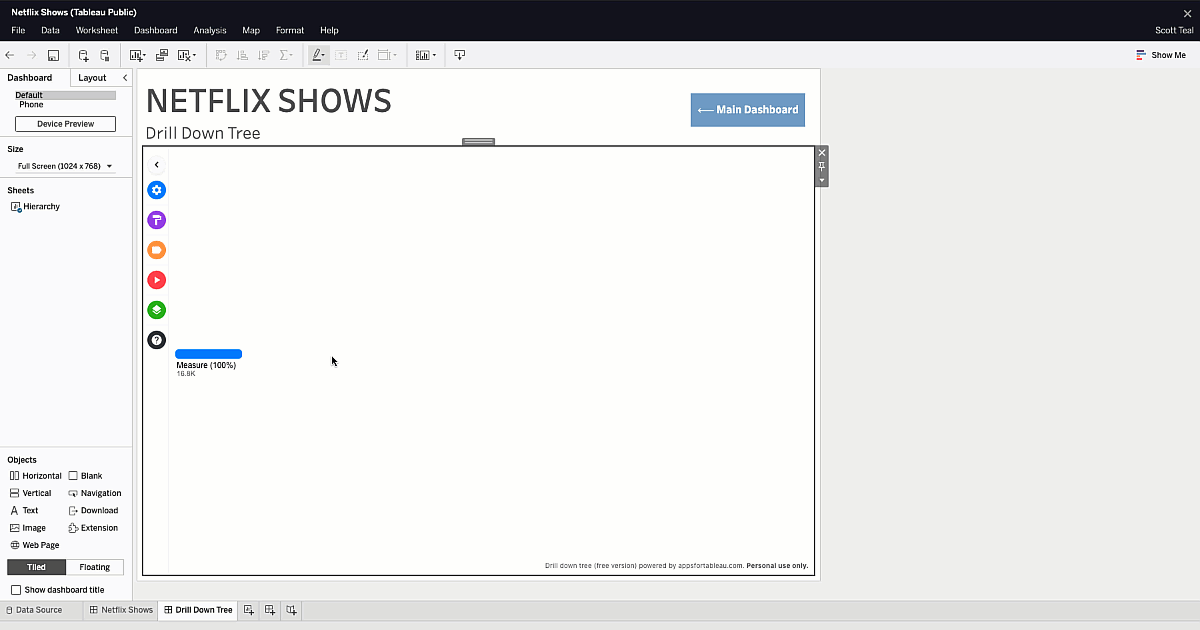
Offer feedback
Whether you love web authoring or feel it could improve, share your thoughts by sending an email. And if you have more ideas for Tableau Public, create and vote on product ideas to let our development team know what matters most to you.
Related Stories
Subscribe to our blog
Get the latest Tableau updates in your inbox.





